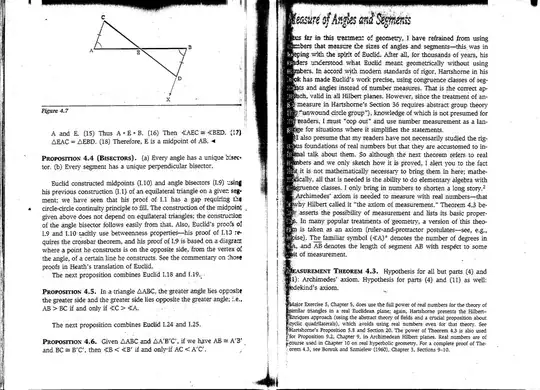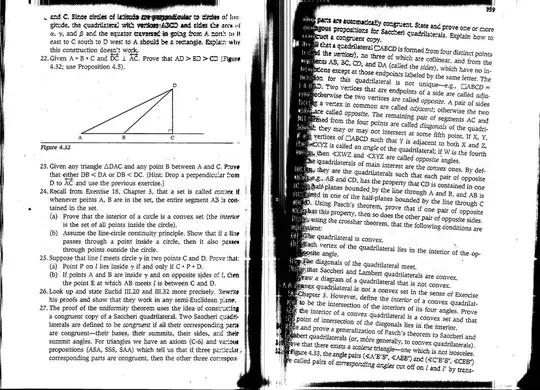Excuse me if this is a silly question, but my plane geometry is very rusty. When I re-read Jack D'Aurizio's answer to the question "How can we prove that $\pi > 3$ using this definition", I wondered why, when viewed from the perspective of high school plane geometry, the area of the regular hexagon of unit spoke length is smaller than the area of the unit disc. Obviously, this follows if the regular hexagon entirely lies inside the unit circle, but why is this true? My first thought was that this is because the distance from the centre of the hexagon to any point on its perimeter is at most $1$. Put it another way, this is a consequence of the following (stronger) statement:
- Given $\bigtriangleup ABC$, if $X$ lies on the line segment $\overline{BC}$, then the length of $\overline{AX}$ is $\le$ the larger length of $\overline{AB}$ or $\overline{AC}$.
The above statement in turn follows from another statement:
- Let $\overline{AP}$ be a fixed line segment and $\bigtriangleup APX$ be a right-angled triangle, where $\overline{AP}\perp\overline{PX}$. The longer the base $\overline{PX}$, the longer the hypotenuse $\overline{AX}$.
This follows directly from Pythagoras theorem. However, all proofs of Pythagoras theorem that I knew, such as the ancient Chinese proof or Einstein's proof, make use of the notion of area. Why must the proof of a statement about length involve the concept of area?
So, here is my question:
- Can the statement in the second bullet point be proved, within the framework of Eucliedan plane geometry, without using Pythagoras theorem or the notion of area?


